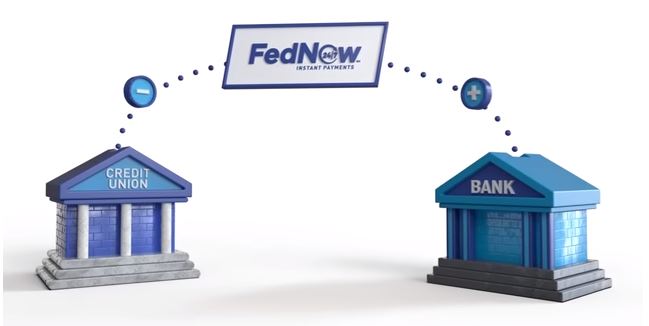Slow Adoption of FedNow — B2B Payments to the Rescue?
FedNow is the Federal Reserve's instant payment system that launched in 2023, with over 300 participating banks so far. However, according to a post on the American Bankers Association's website by David Ritter, director and financial services strategy at CI&T, a global digital specialist, many banks remain hesitant to fully adopt it -- there are, after all, nearly 10,000 banks and credit unions out there.
Mr. Ritter notes that banks have, on the other hand, very much embraced receiving instant payments for uses like wage deposits and insurance payouts. However, there are many that have not enabled sending payments due to concerns about fraud and loss of revenue from wire transfers.

Further Entanglements
Also noted are concerns banks have regarding other payment types that create income, and seem to be facing an "information deficit":
Alongside ATO fraud, some banks are also worried that FedNow-powered transactions could cannibalize payment types that actively generate revenue (such as wire transfers). Customers likely won’t pay hefty fees if they can send large amounts of money for free.
But beyond these concerns, there’s a more fundamental problem: Many banks need to be more precise on the full range of business problems that FedNow can solve. While the service has an explorer where bank leaders can self-educate about high-level use cases, most banks still define the most relevant ones for their customers and businesses.
BtoB to the Rescue?
Enabling instant business-to-business payments through FedNow could address banks' concerns, as B2B payments have lower fraud risk and are less likely to replace wire transfers than consumer payments. However, Mr. Ritter sees further entanglements:
One untapped aspect of FedNow offers some light in the fog. Instant B2B payments solve a real problem for businesses: In an age of same-day Venmo consumer deposits, B2B payment technology still needs to be faster and more cohesive. But with FedNow’s infrastructure, banks can bring instant payments to commercial customers using their existing Federal Reserve master account. (The Clearing House’s RTP requires a separate account.)
When banks opt into FedNow’s send and receive capabilities, they can empower businesses to:
- Instantly pay vendors for goods and services.
- Send digital requests for payment with an embedded instant payment button.
- Aggregate real-time payment data in their invoicing software.
Many small-to-medium size companies still continue use of other payment methods, including checks. Aside from the familiarity, these businesses take advantage of the "float time" -- the time it takes for a check to arrive to its destination, along with the 24-48 processing times for the payment.
OrboGraph's Marketing Manager James Bi -- a veteran of the service industry, as his parents have owned and operated a local Chinese food restaurant for over 30 years -- provides a scenario that is common within this space:
If you are a local restaurant owner and need to pay a food vendor, but you know your card processor does not deposit funds until the end of the week, mailing a check gives them a few extra days to ensure that they have the funds in their account. This is a common practice, particularly as the service industry moved away from cash to cards.
Even some large businesses prefer to send out check payments as they provide a paper trail of the payment. This is especially important as instant payments provides instant funds for internal abuse/fraud.
There is no doubt that the FedNow system is a step in the right direction when it comes to streamlining the payments industry. However, adoption will continue slowly until strong use cases are presented.